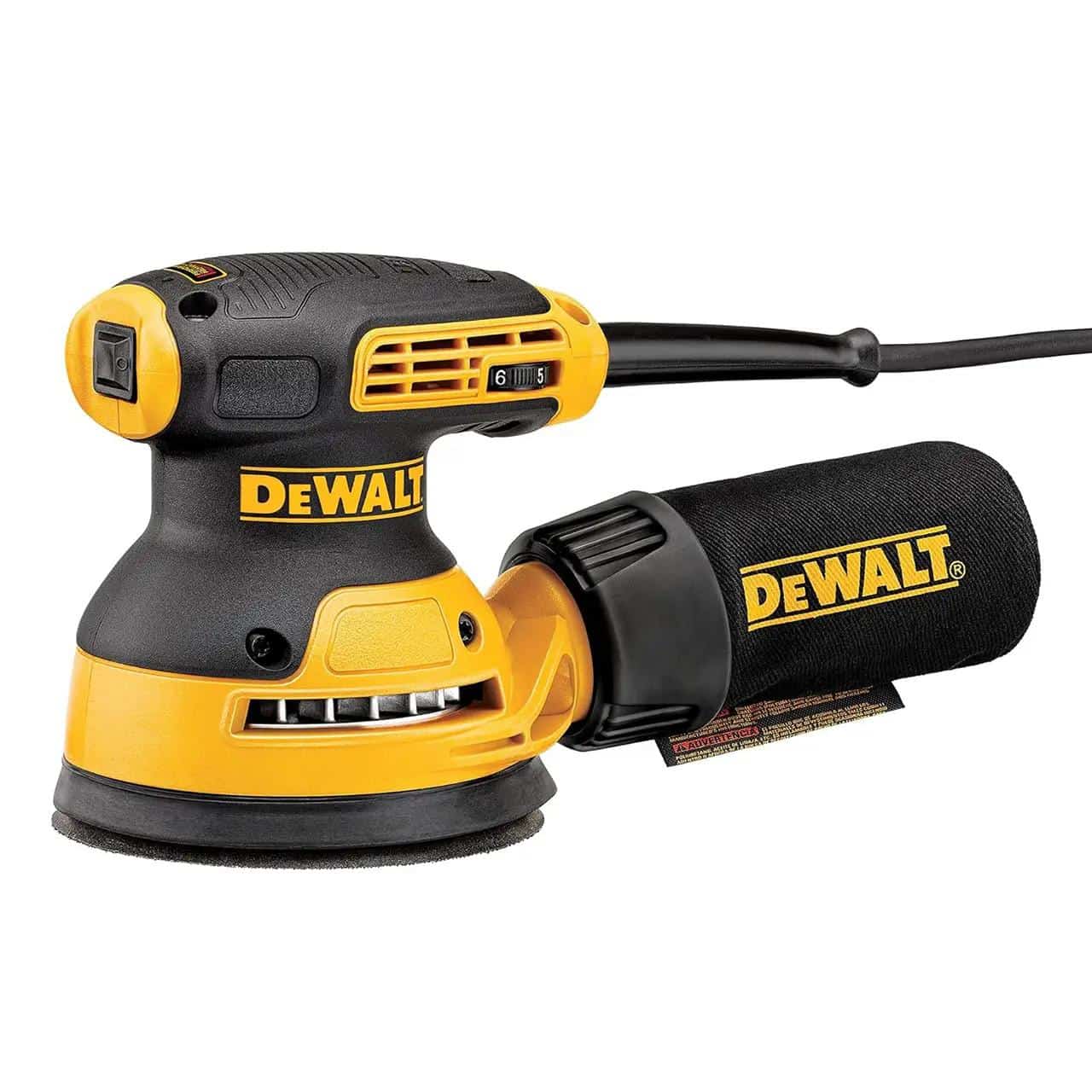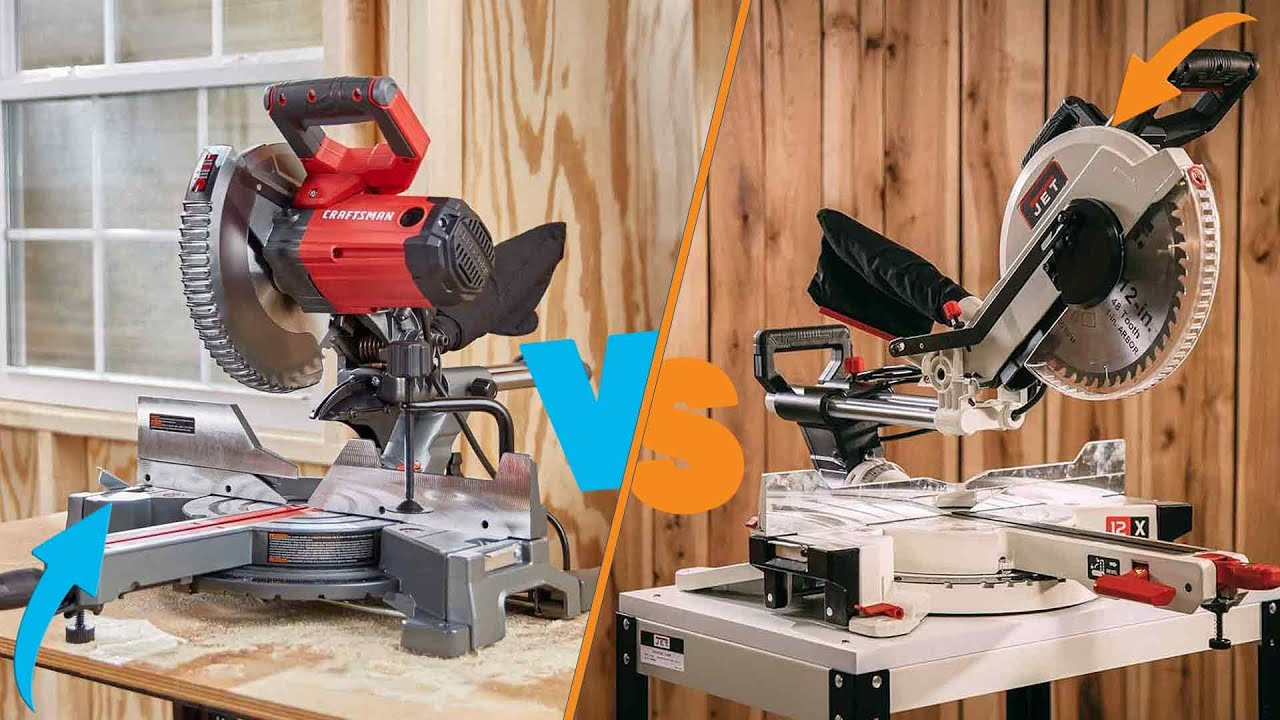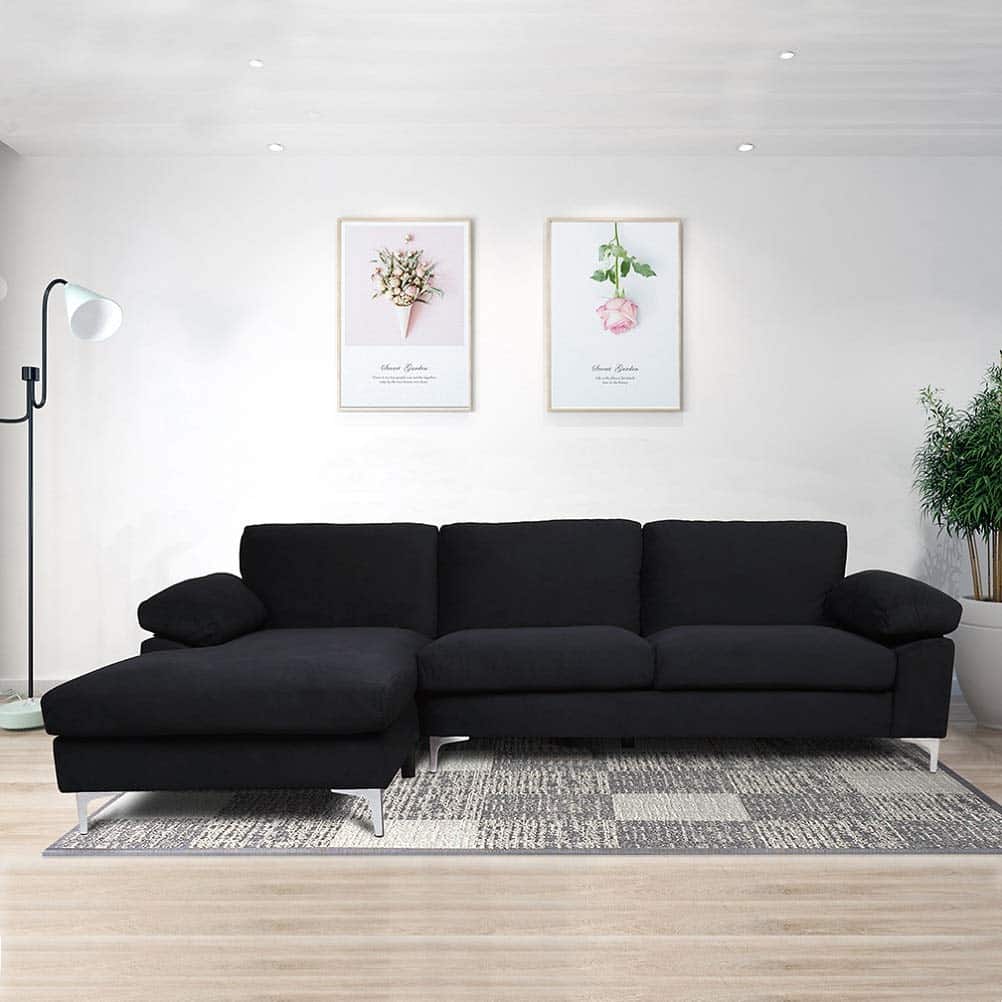The Best Sander for Furniture: A Complete Guide
Breathing new life into old furniture starts with choosing the right tools for the job. Whether restoring a family heirloom or updating a flea market find, selecting the proper sander can distinguish between a professional finish and a DIY disaster.
This guide will cover everything you need to know about choosing and using the best sander for your furniture projects.
From understanding different types of sanders to mastering proper techniques, we’ll cover the essentials that ensure beautiful results.
We’ll explore various sander types, compare features that matter most and share expert tips to help you work efficiently. By the end, you’ll know how to select the perfect sander for your needs and budget.
Understanding Different Types of Sanders
1. Random Orbital Sanders
Random orbital sanders combine circular motion with vibration to create a smooth, swirl-free finish. They work well on most furniture surfaces and are favorites among beginners and professionals.
The dual-action movement helps prevent deep scratches while efficiently removing material. These sanders are particularly useful for prepping furniture before painting or refinishing.
2. Detail Sanders
Detail sanders feature a triangular pad reaching tight corners and small spaces. These tools excel at working around furniture trim, moldings, and decorative elements that larger sanders can’t reach.
The pointed tip allows precise control when working on carved details or intricate patterns. Many detail sanders come with specialized attachments for different shapes and angles.
3. Belt Sanders
Belt sanders are powerful tools that quickly remove old finishes and damaged wood layers. These machines use a continuous loop of sandpaper that moves at high speeds.
You’ll want to use a belt sander on large, flat surfaces like table tops or cabinet sides. However, their power requires careful control to avoid damaging the wood.
4. Finishing Sanders (Palm Sanders)
Palm or finishing sanders provide the final smooth touch to your furniture pieces. These tools move in a straight-line pattern, making them perfect for working with the wood grain.
Their lightweight design allows for extended use without fatigue. Most palm sanders use standard sandpaper sheets, making them economical for regular use.
5. Spindle and Drum Sanders
Spindle sanders specialize in smoothing curved edges and contoured surfaces. These tools use an oscillating drum covered in sandpaper.
Professional woodworkers often use these sanders for complex furniture designs. They’re particularly valuable when working on chair arms, table legs, or rounded surfaces.
Factors to Consider When Choosing a Sander

1. Project Requirements
Your sander selection should be guided by the size and complexity of your furniture piece. Large, flat surfaces need tools different from detailed, ornate pieces.
Consider the current condition of your furniture and what you want to achieve. A heavily painted piece might need a more aggressive sander than one that needs light refinishing.
2. User Skill Level
Beginners should start with sanders that offer more control and forgiveness. Random orbital sanders make an excellent starting point for most new furniture refinishers.
More experienced users might benefit from having multiple sanders for different tasks. This allows for greater flexibility and efficiency in their work.
3. Budget Constraints
Quality sanders range from affordable to professional-grade prices. While higher prices often mean better build quality and features, many mid-range options provide excellent value.
When setting your budget, consider how often you’ll use the sander. Frequent users should invest in more durable tools, while occasional users might do well with budget-friendly options.
4. Sander Features
A good dust collection system keeps your workspace clean and protects your lungs. Look for sanders with efficient dust ports or built-in collection systems.
Variable speed controls allow you to adjust the sander’s aggressiveness based on your needs. Slowing down the sander helps prevent damage when working on delicate areas.
An ergonomic design and comfortable grip reduce fatigue during extended use. When choosing your sander, pay attention to the weight and handle design.
5. Power Source
Corded sanders provide consistent power for extended use, making them ideal for workshop settings where mobility isn’t a primary concern.
Cordless sanders offer greater flexibility and portability. Consider battery life and charging time if you choose a cordless model, especially for larger projects.
Top 10 Best Sanders for Furniture Refinishing in 2024
1. SurfPrep 3X4 Electric Ray Sander

A lightweight, low-vibration sander designed for detailed furniture refinishing and minimizing dust during projects.
- Type: Electric sander
- Key Features: Low vibration, lightweight, shop vac compatible.
- Pros: Gentle on veneer, excellent for corners, reduces dust.
- Cons: Premium price.
- Price Range: $500.00 – $600.00
- Best For: Intricate furniture refinishing and veneer restoration.
2. Black+Decker BDEMS600 Detail Sander

An affordable, versatile sander is ideal for easily tackling tight spaces and small furniture projects.
- Type: Detail sander
- Key Features: Compact design, ergonomic grip, dust collection system.
- Pros: Budget-friendly, versatile, easy to use.
- Cons: Lacks power for large projects.
- Price Range: $30.00 – $50.00
- Best For: Beginners and detailed refinishing.
3. WEN 6301 Mouse Sander

A lightweight, budget-friendly sander perfect for small projects and intricate detail work.
- Type: Mouse sander
- Key Features: Lightweight, dust collection bag, ergonomic design.
- Pros: Affordable, durable, and easy to control for small projects.
- Cons: Delicate tips may wear out quickly.
- Price Range: $25.00 – $40.00
- Best For: Beginners and small furniture refinishing projects.
4. DeWalt 125mm Random Orbital Sander

A robust sander with high power, perfect for medium to large surfaces and smooth finishes.
- Type: Random orbital sander
- Key Features: High power, ergonomic grip, dust extraction compatibility.
- Pros: Efficient, versatile, and durable.
- Cons: Heavy and not suitable for tight corners.
- Price Range: $75.00 – $100.00
- Best For: Medium to large furniture refinishing projects.
5. DeWalt 18V XR Multi-Tool Cordless Sander

A cordless, versatile tool designed for intricate sanding tasks and hard-to-reach areas.
- Type: Multi-tool cordless sander
- Key Features: Battery-powered, LED torch, interchangeable blades.
- Pros: Portable, powerful, excellent battery life.
- Cons: Slightly heavy for extended use.
- Price Range: $150.00 – $200.00
- Best For: Intricate sanding and portability.
6. Ryobi Belt Sander

A heavy-duty sander perfect for stripping paint or varnish on large flat surfaces.
- Type: Belt sander
- Key Features: High power, durable design, wide sanding belt.
- Pros: Efficient for large jobs, great for heavy stripping.
- Cons: Unsuitable for detailed work or small spaces.
- Price Range: $75.00 – $120.00
- Best For: Large flat surfaces like tables and cabinets.
7. SKIL 7302-02 Octo Detail Sander

A versatile detail sander equipped with multiple attachments for precise sanding.
- Type: Detail sander
- Key Features: Eight attachments, pressure control, clear dust canister.
- Pros: Excellent for tight spaces, versatile, ergonomic.
- Cons: Attachments may wear out quickly.
- Price Range: $50.00 – $75.00
- Best For: Intricate detailing and tight spaces.
8. TACKLIFE Mouse Sander PMS01A

An ergonomic and compact sander with advanced dust collection, suitable for light furniture refinishing.
- Type: Mouse sander
- Key Features: Lightweight, vacuum adapter, durable motor.
- Pros: Comfortable to use, effective dust control.
- Cons: Dust trap may detach during use.
- Price Range: $30.00 – $45.00
- Best For: Beginners and light refinishing tasks.
9. Black+Decker BDCMS20 Cordless Palm Sander

A cordless sander with excellent flexibility and ease of use, great for detailed sanding.
- Type: Cordless palm sander
- Key Features: Cordless, ergonomic grip, interchangeable detail attachments.
- Pros: Long battery life, portable, easy to handle.
- Cons: Slightly heavy due to battery.
- Price Range: $50.00 – $90.00
- Best For: Small to medium furniture projects requiring portability.
10. Bosch GSS20-40 Orbital Finishing Sander

A finishing sander designed for smooth surfaces and precise sanding with a square base for versatility.
- Type: Orbital finishing sander
- Key Features: Square base, durable motor, ergonomic handle.
- Pros: Compatible with standard sandpaper, precise control.
- Cons: Limited use of tight spaces.
- Price Range: $60.00 – $90.00
- Best For: Smooth finishes and medium furniture restoration projects.
How to Choose the Right Sander for Your Furniture Project

1. Assessing Your Project Needs
Start by carefully examining your furniture piece to identify all areas that need attention. Look for deep scratches, watermarks, or uneven surfaces requiring extra work.
Take time to note any thin areas or intricate details that require special care. This initial assessment will help determine whether you need multiple sanders for different parts of the project.
2. Matching Sander Types to Projects
Antique furniture often requires gentle handling with detail sanders to preserve original features. These pieces benefit from tools that offer precise control and minimal material removal.
Modern furniture typically allows for more aggressive sanding methods. Straight lines and simple designs work well with random orbital or belt sanders for quick results.
3. Budget-Friendly Options
Quality sanders exist at every price point, with many excellent options under $100. The key is finding tools that balance durability with essential features.
Many mid-range sanders from trusted brands offer professional-level results. Look for models with good dust collection and variable speed controls, even in lower price ranges.
4. Long-Term Investment Considerations
Investing in a well-known brand often provides better warranty coverage and parts availability. Consider manufacturers who have been in the market for many years.
Research user reviews and professional recommendations before making your final choice. Pay special attention to comments about long-term reliability and customer service experiences.
Expert Tips and Best Practices for Sanding Furniture

1. Preparing Your Workspace
Set up your work area in a well-ventilated space with adequate lighting. Always wear appropriate safety gear, including eye protection, dust mask, and hearing protection.
Create a dust management system using tarps and proper ventilation. For better dust collection, consider connecting your sander to a shop vacuum.
2. Sanding Techniques
Hold your sander with light pressure, letting the tool’s weight do most of the work. Move the sander slowly and steadily across the surface, following the wood grain when possible.
Avoid tilting the sander or applying uneven pressure, creating unwanted marks. Keep the sander moving constantly to prevent gouging or creating low spots.
3. Choosing the Right Sandpaper Grit
Begin with coarser grits (60-80) to remove old finishes or significant damage. Progress through medium grits (120-150) for general smoothing.
Finish with fine grits (220 and above) for the final smooth surface. For optimal results, different wood types might require adjusting the grit progression.
4. Maintenance and Care of Your Sander
Clean your sander after each use, paying special attention to dust collection ports. Empty dust bags or containers regularly to maintain optimal performance.
Check power cords for damage and inspect sanding pads for wear. Replace worn parts promptly to ensure consistent results and prevent damage to your furniture.
Store your sander in a dry place, preferably in its original case or a dedicated storage solution. Regular maintenance extends the life of your tool and ensures reliable performance.
Fun Facts About Sanders

-
Sanders Were Inspired by Shoe Polishers
The first electric sanders were inspired by electric shoe polishers, with rotating pads designed for buffing shoes. This idea was adapted to create sanding tools for woodworking. -
The First Sander Was Invented in 1920
In 1920, John S. Thurman patented the handheld orbital sander. It revolutionized woodworking by making sanding faster and less labor-intensive. -
Random Orbital Sanders Have a “Magic Motion”
The term “random orbital” refers to the sanding pad’s unique spinning and oscillating motion, which prevents swirl marks and creates a smoother finish. -
Sandpaper Grit Dates Back to Ancient China
The concept of sandpaper was first used in 13th-century China, where crushed shells, seeds, and sand were glued to parchment to smooth surfaces. -
Some Sanders Can Weigh Less Than 2 Pounds
Compact sanders like mouse or palm sanders are incredibly lightweight and perfect for intricate or overhead work. -
Dust Control Makes Sanders More Eco-Friendly
Modern sanders with vacuum compatibility or dust collection systems reduce airborne particles, making them safer for users and better for the environment. -
Belt Sanders Are the Powerlifters of Sanding
Belt sanders are so powerful that they’re often used in metalworking, not just woodworking. They can remove large amounts of material in a short time. -
There’s a Sander for Almost Every Surface
From drywall and metal to wood and concrete, specialized sanders exist for nearly every type of surface and material. -
Sanders Can Polish, Too!
Some sanders, like random orbital models, can be equipped with polishing pads to give wood, metal, or even cars a mirror-like shine. -
Sanding Is Not Just About Wood
Sanders is also widely used in auto-body repair, where they smooth out metal surfaces and prep them for painting.
Final Words
Selecting the right sander for your furniture project is about more than buying a tool—it’s about investing in the quality of your work.
The perfect sander can transform tedious tasks into manageable projects while ensuring professional results.
Consider your specific needs, from the type of furniture you’re working with to your experience level and budget.
Take time to assess each project’s requirements before starting, and don’t hesitate to use different sanders for various stages of your work.
We’d love to hear about your furniture restoration experiences and which sanders have worked best for your projects.
Share your stories in the comments below, or reach out with questions about specific furniture pieces you’re planning to restore.
Start with the right tool, and watch your furniture pieces transform into beautiful works of art.
Frequently Asked Questions (FAQs)
Should I Use An Orbital Sander On Furniture?
Yes, an orbital sander is excellent for smooth finishes on flat surfaces, but avoid aggressive sanding to prevent swirl marks, especially on delicate or detailed furniture.
Which Sander Is Best For Getting Into Tight Corners?
Detail or mouse sanders are best for tight corners and intricate areas, as their triangular design allows for precise sanding in hard-to-reach spaces.
How Do I Choose The Right Sandpaper Grit For My Project?
Start with coarse grit (40-60) for removing material, medium grit (80-120) for smoothing, and fine grit (180-240) for finishing surfaces before painting or staining.







